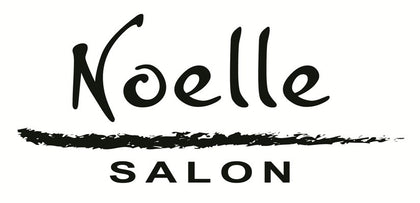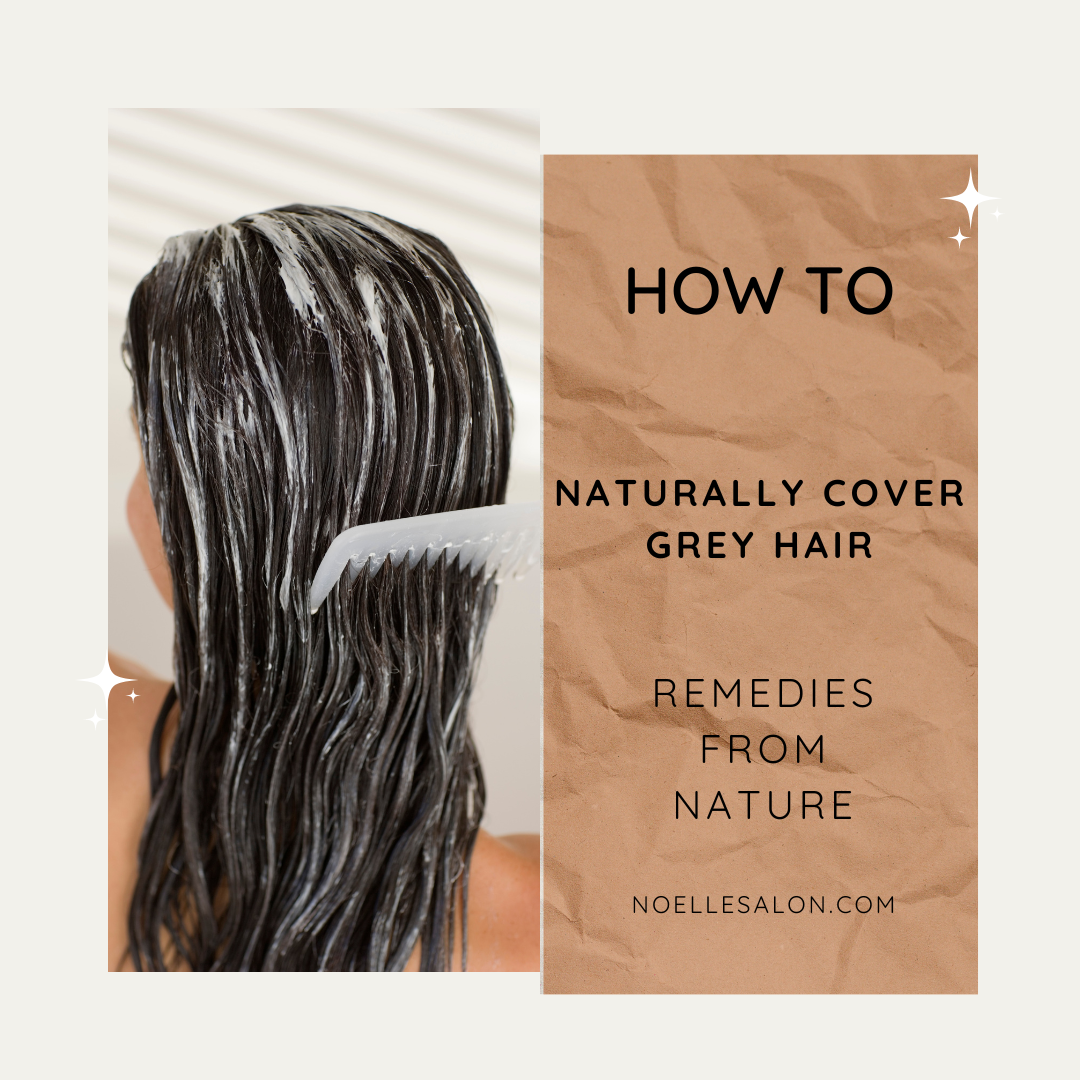10 Effective Methods: Natural Hair Dye for Grey Hair

In a world focused on looking young, the beauty industry often promotes hair dyes to cover gray roots. Many people, however, want to return to their natural hair color without using strong chemicals from regular dyes. This journey takes them into a realm of natural remedies and methods, including coloring gray hair with natural dyes or using specialized free hair color options for gray coverage, such as Indus Valley Gel Hair Color. These not only help with gray coverage but also support and improve the overall health of their hair, without the need for a salon visit. One natural ingredient that can be used for hair dye is yogurt, which can provide a beautiful, natural color without the use of harsh chemicals. Another effective method for natural hair dye is using walnut shells or walnut powder, which can provide a rich, dark color without the use of chemicals. For those with black hair, natural options such as black walnut, black tea, sage, and nettle can be used to dye hair without the use of harmful chemicals like ammonia and retain the natural colour of the hair. Additionally, onion juice is a potent natural remedy for grey hair, containing antioxidants that tackle the premature onset of silver hair strands. This DIY hair mask is not only effective in covering grey hair, but also in reducing hair loss and promoting new hair growth.
The Concern About Harmful Chemicals in Regular Hair Dyes
As the demand for hair dye continues to rise, many consumers are becoming increasingly aware of the harmful toxic chemicals present in conventional hair products. Chemical hair dyes often contain toxic chemicals such as ammonia, parabens, and resorcinol, which are linked to various health risks, including allergies, skin irritation, and even more severe long-term effects. These harmful toxic chemicals not only pose risks to human health but also contribute to environmental pollution, raising concerns about their impact on our planet.
In contrast, natural hair dye alternatives are gaining popularity as people seek safer options for coloring their hair and achieving a new permanent hair color. By opting for natural ingredients, individuals can avoid the toxic chemicals commonly found in traditional dyes. Natural hair dyes provide a gentler solution for covering gray hair while promoting overall hair health. Embracing these options allows for a more sustainable approach to beauty, enabling individuals to feel confident in their choices without compromising their well-being. Furthermore, these alternatives effectively address the concern of removing toxic chemicals from hair care.
10 Natural Methods to Natural Ways to Cover Grey Hair
Covering gray hair can be done without using harsh chemicals. There are many natural ways to hide those silver strands of white hair while also taking care of your hair. You can use simple kitchen items or strong herbs to manage white hair. These methods offer a kinder way to care for your hair.
Here are ten natural methods that are easy to find and can fit into your routine.
1. Coffee for Deep Brown Shades Cover Grey Hair Naturally
Coffee is a popular morning drink, but it can also help enhance your natural hair color. Its dark brown color can stain hair, especially if you have light to medium brown hair.
The caffeine found in coffee may also boost hair follicles, which could help with hair growth. This method does not last long but can be done often to keep the shade you want.
To darken your hair with coffee, brew a strong cup. Allow it to cool down, then mix it with coffee grounds and a leave-in conditioner. Apply this mix to clean hair, let it stay for an hour, and then rinse it out well.
2. Tea Rinses for Enhanced Darkness
For many years, black tea has been a popular choice for naturally darkening hair and boosting its shine. It has tannins, which work as a natural dye, giving dark hair a subtle brown tint.
This is especially good for people who want to make their hair color deeper or gradually mix in gray strands.
To use black tea as a rinse for your hair, steep a few tea bags in hot water. Let the tea cool down, and then use it as a final rinse after washing your hair. Keep it on for a few minutes before rinsing it out with cool water.
3. Henna for Vibrant Red Tones
Henna is a natural dye made from plants. People have used it for many years to color their hair, skin, and nails. Henna gives hair a bright reddish-brown color, making it a great choice for anyone wanting vibrant red tones while also considering options like light mountain natural hair color for a more diverse palette. It's acceptable to leave henna on for a long time, as this allows the dye to penetrate better.
When you mix henna powder with water, it creates a paste. This paste contains a dye that sticks to the keratin in your hair, giving it a semi-permanent color.
To color your hair with henna, simply mix the henna powder with water to create a paste. Apply the paste to your hair and leave it on for a few hours before rinsing it out. For a vibrant red tone, you can mix henna powder with indigo powder to create a unique color. The final color can vary based on the quality of henna and indigo powder you use, how porous your hair is, and how long you let it sit.
4. Sage Water to Restore Natural Hair Color
Sage is a herb that is well-known for cooking and health. It also has a role in natural hair care. Many people think it can help bring back natural hair color and reduce gray hair.
Sage has compounds that might boost melanin production. This means it may help slow down or reduce gray hair. It can also add gentle highlights, which are especially visible in dark hair.
If you want to make a sage water rinse, you can do this easily. Just simmer sage leaves in water for about 30 minutes. Then, let it cool, strain the liquid, and use it as a final rinse after you shampoo your hair.
5. Beet and Carrot Juice for Red Highlights and Natural Gray Hair Cover
Beet and carrot juice are not only healthy but also a fun way to add a reddish color to your hair. Beet juice makes a cooler, deeper red, while carrot juice gives a warmer, orange-red shade. Here's how to use them:
-
Beet Juice: Mix beet juice with a carrier oil like coconut or olive oil. Apply it to your hair, cover it with a shower cap, and leave it on for at least one hour. Rinse your hair with diluted apple cider vinegar.
-
Carrot Juice: Use the same process as beet juice. If the color isn't bright enough, you can try again the next day.
These juices work best on lighter hair and give soft, natural-looking highlights. You can also mix them to find your perfect shade.
6. Lemon Juice to Gradually Lighten Strands
Lemon juice is a popular natural lightener. It can help hide gray hair, especially in blonde hair.
The citric acid in lemon juice works with sunlight to lighten hair color slowly. It may not remove gray hair completely, but it can help mix them well with the rest of your hair.
For a natural light look, mix lemon juice with water. Spray it on your hair before sitting in the sun. Just remember, too much lemon juice can dry out your hair.
7. Potato Skins to Darken Grey Hair
Potato skins are often thrown away in the kitchen. However, they can be good for hair care. They have starches that work like a natural dye. This can gradually darken hair and help cover some grey strands.
When you boil potato skins, the starch comes out. It sticks to the hair, changing the color a bit over time. This works best for people with light to medium brown hair. It blends grey strands nicely.
To use this method, boil potato skins in water for about 30 minutes. Then, strain the liquid and let it cool. Use this water as a rinse after you wash your hair with shampoo. Do this regularly to see good results.
8. Coconut Oil and Lemon Mixture for Hair Health
This mix uses the healthy benefits of coconut oil and the lightening effects of lemon juice. Coconut oil is known for being great for hair. It can help make hair healthier, add shine, and may slow down the growth of gray strands.
Using coconut oil and lemon juice together makes a nourishing hair mask. You can use this mask regularly to improve your hair health and lessen the difference between gray strands and colored hair.
To make the mixture, melt some coconut oil and add a few tablespoons of lemon juice. Apply it to your hair, paying special attention to your scalp and the ends. Leave it on for at least an hour. Then, wash your hair with a gentle shampoo.
9. Curry Leaves to Fight Grey Hair
Curry leaves add a great flavor to food, but they also have strong benefits for your hair. They are full of Vitamin B and can help stop premature greying by boosting melanin. Melanin gives hair its color.
Curry leaves can also strengthen hair follicles, lower hair fall, and help hair grow. Adding curry leaves to your hair care routine can give you many benefits.
To use curry leaves for your hair, boil them in coconut oil until they turn black. After it cools, strain the oil. Then, massage it into your scalp and hair. Leave it on for a few hours or overnight before washing it out with a gentle shampoo.
10. Chamomile Tea for Natural Lightening
Chamomile tea is well-known for helping people relax. It can also naturally lighten hair in a gentle way. This is a great option for those with lighter hair colors. It helps cover up gray hair or achieve a lighter shade.
The compounds in chamomile can slowly lift hair color. This creates soft highlights that mix well with gray strands, especially in blonde or light brown hair.
To use chamomile tea for lightening hair, first brew a strong cup of it and let it cool down. After you shampoo and condition your hair, rinse it with the chamomile tea. If you want a stronger effect, sit under the sun for a while. The sunlight will help boost the lightening process.
Conclusion
Using natural ways to cover grey hair can make it look good and help nourish it. You can try remedies like coffee and chamomile tea. These options provide different shades and support healthy hair. Give these gentle choices a try instead of chemical dyes. Remember, results can change depending on your hair types and how often you use them. For the first time, boost your confidence and refresh your hair naturally with these good solutions for grey hair.
Frequently Asked Questions
How long do these natural methods take to show results?
Natural methods take time, so don't expect to see big changes right away. You may start to notice some small changes after using them a few times. However, more obvious results could take weeks or even months to appear, as they match the natural hair growth cycle. Keep trying different things!
Can these methods be used on all hair types?
These natural remedies are usually safe for all hair types. However, how well they work and the slight changes in color may vary based on your natural hair color and texture. Make sure to do a patch test before using the remedy fully, especially if you have sensitivities to some natural ingredients.
How often should I apply these natural remedies?
Consistency is important when using natural remedies for your strawberry blonde hair. You can add most of these methods to your hair care routine for your strawberry blonde hair 2-3 times a week. Adjust this based on your hair's needs and the results you want. Keep in mind that getting and keeping your natural hair color takes time. It is not just a quick solution.
What to Look for in a Natural Hair Dye
When selecting a natural hair dye, especially for achieving a beautiful brown hair color, it's crucial to focus on specific aspects that ensure both safety and effectiveness. Look for products that emphasize natural alternatives and natural ingredients, as these are less likely to contain harmful chemicals. Ingredients such as henna, indigo, and various plant extracts are excellent choices, as they not only provide color but also nourish the hair. Additionally, pay attention to labels that explicitly state "free from harmful chemicals" to avoid common irritants and allergens.
To help you make an informed choice, here's a quick reference table that considers the years of experience in the field of hair dye analysis:
Criteria
Natural Hair Dye
Conventional Hair Dye
Ingredients
Natural plant-based
Synthetic chemicals
Safety
Usually hypoallergenic
Potential allergens
Environmental Impact
Eco-friendly
Often harmful
Hair Health Benefits
Nourishing
Can damage hair
By prioritizing natural ingredients and avoiding harmful chemicals, you can ensure a healthier coloring experience that aligns with your values and supports your hair's vitality, highlighting the importance of active ingredients in the process.
Look for gentle ingredients
When selecting a natural hair dye, it's vital to prioritize gentle ingredients that are safe for your scalp and hair. Focus on products that emphasize minimal processing and contain natural alternatives, such as plant-based dyes derived from henna, indigo, or walnut shells. These gentle ingredients not only provide color but also nourish your hair, minimizing the risk of damage. Always check labels for terms like "free from harsh chemicals," ensuring that the product aligns with your commitment to healthier hair care.
Additionally, it's wise to avoid dyes containing synthetic additives or allergens, which can lead to irritation or adverse reactions. Instead, opt for brands that prioritize transparency in their active ingredient lists, allowing you to make informed choices for your hair. By choosing gentle ingredients, you can confidently embrace natural hair dye options that enhance your beauty without compromising your scalp's health.
Find the best coverage
Achieving the best coverage with natural hair dye often involves a bit of experimentation to find the right method for your hair type and desired results. For those with gray hair, consider using darker natural dyes like coffee or black tea, which can effectively blend gray strands while adding depth and shine. Additionally, incorporating multiple methods, including permanent hair color options, can maximize coverage; for example, using a base of henna followed by a coffee rinse can create a rich, multi-dimensional color.
It's also essential to apply the dye evenly and thoroughly, ensuring that every strand gets adequate exposure. Utilize gloves during application to prevent staining your hands and consider sectioning your hair to achieve uniform coverage. Remember that natural dyes may take longer to develop compared to chemical options, such as hydrogen peroxide, so be patient and allow the dye to sit for the recommended time to achieve the best results. By focusing on effective application and combining methods, you can discover the best coverage for your unique hair needs.
Get the right amount
When using natural hair dyes, getting the right amount is crucial for achieving the desired color without overwhelming your hair. Start by assessing the length and thickness of your hair to determine the appropriate quantity of dye. For shorter hair, a smaller batch of dye will suffice, while longer or thicker hair may require a more substantial amount to ensure full coverage.
As a rule of thumb, begin with a modest amount and adjust as needed. If you're unsure, prepare a smaller quantity, applying it to a single section first to gauge the color outcome. Once you're satisfied with the results, you can mix a larger batch for the entire head. This method not only minimizes waste but also allows you to maintain control over the dyeing process, ensuring that you achieve the right shade without compromising hair health.
After application, it's essential to allow the dye to set for the recommended duration, which varies depending on the natural ingredient used. This patience ensures that the color penetrates effectively, allowing your hair to absorb the nutrients and achieve a vibrant, long-lasting hue. By focusing on the right amount and application timing, you can enhance your hair dye experience while prioritizing its health and vitality.








